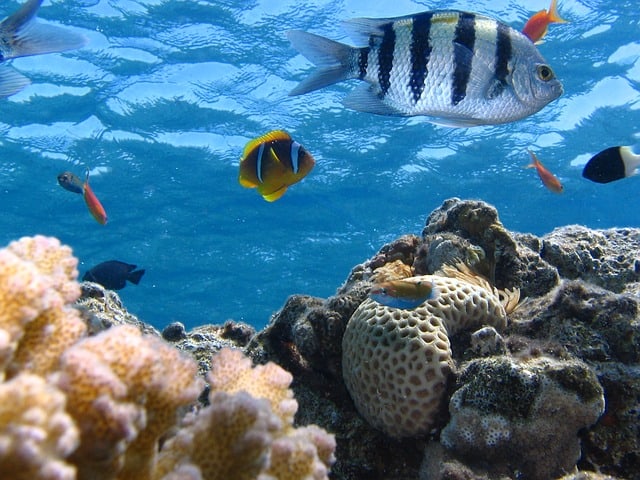9 Devastating Threats to Biodiversity and How They Affect Our Environment

Biodiversity simply means the variety of life forms on the planet earth. It also includes every variation existing in every level of biological organization.
We are to some extent familiar with the web of life sustaining us. More than 3 billion humans depend on coastal and marine biodiversity, while over 1.6 billion people depend on vegetation for their livelihood.
Furthermore, we rely on the intact ecosystem to replenish and purify the water we need to drink, the air we need to breathe and the land on which we grow our food. In short, biodiversity keeps the world’s ecosystem balanced, thriving and healthy.
Since the ecosystem cannot be bought at any cost, it is vital to protect it and ensure that the poor and vulnerable groups can access its services to eliminate extreme hunger and poverty.
Unfortunately, for the past 200 years, the destruction of ecosystems by exterminating animals and plants life has been rising at an unprecedented rate, with huge impacts imposed by human beings.
Major Threats to Biodiversity
Let’s look at the devastating threats to the world’s biodiversity.
1. Habitat Loss and Deforestation
Biodiversity on land is highly concentrated in the tropical rainforests. More than 50 percent are estimated to exist in these areas. And yet, around 20 percent of the rainforest has been felled for agriculture, cattle ranching, and timber, over the last 40 years.
Deforestation affects plants and animals by; eliminating plant life and fragmenting healthy animal population. Shall we look at how each one occurs?
- Eliminating plant life – When forests are being cut and cleared for land development, the roots of these trees which help in holding the soil structure together are removed and the topsoil is swept away.
Not only do the ecosystem loses the plants cleared away, but also reduces the chances of dispersed seeds growing again in that land. This is so because when the topsoil is scrapped, the essential nutrients that support plants growth is lost.
- Fragmenting Healthy Animals Population – Apart from plant life, deforestation also results in the elimination of animal life along its borders. While some animals may run away by migrating, chances are high that they will not quickly adapt to the new environment.
Challenges in their new ecosystem may include being preyed upon by predators, attack by diseases to which their bodies have no resistance, shot by humans or starvation if their only source of food was in the degraded environment.
2. Climate Change
Oceans are becoming warmer and sea levels are rising. Current prolonged droughts threaten wildlife, crops and freshwater supplies. Overall changes in the climate across the world have made many species to routinely go extinct.
The stress on biodiversity goes beyond the levels inflicted by global climatic changes in the recent past. It includes the shift of climate zones, temperature increases, the melting of ice and snow, extreme weather events and floods.
These changes expose the natural systems to risk because of their lack of ample adaptive capacity.
3. Pollution
When you look at any ecosystem, you will identify numerous forms of contamination. Streams are full of poisonous chemicals from factory processes, trash from landfills, rivers overloaded with farm nutrients and skies filled with smog.
Natural substances can also pollute the environment when they are plenty in a particular area. For instance, phosphorus and nitrogen are vital nutrients for plants, but when they accumulate in the water system after application of fertilizers, they become uninhabitable for wildlife and fish.
These pollutants muddy landscapes, poison waterways and soils, or kill animals and plants. Humans are also adversely affected by these contaminants. Continued exposure to air pollution, for instance, can cause chronic respiratory diseases or other lung diseases.
According to recent research, more than 1 billion people cannot access clean water and about 2.4 billion do not have adequate sanitation.
4. Overexploitation
Overexploitation occurs when many individuals are eliminated from a population that it cannot sustain itself without intervention. Overhunting and overfishing are both kinds of overexploitation.
While direct use of animals and other resources is important for human survival, overusing is a crucial problem in conservation. As the population of species’ decline, they eventually become unable to perform their ecological services like pollination.
Beyond population reduction, overexploitation can also limit the affected species’ ability to condone indirect contributors to biodiversity loss like technological change.
Extinction or decline of a single species can change the composition of other species. For example, when one species declines due to overfishing, the market will be driven to overexploit another species.
5. Epidemic and Infectious Diseases
Infectious diseases affect human, wildlife and domestic animals alike, with a number of pathogens being able to spread on many species. 50 years ago, when antibiotics and vaccines were manufactured, the battle against infection seemed to have been won against humans.
However, an emergence of antimicrobial resistance and zoonotic diseases from wildlife has been reported to be causing fatal epidemic outbreaks. Concurrently, transmittable diseases have currently been identified as a leading threat to wildlife conservation.
6. Poaching
Illegal hunting of wildlife is clearly visible and much harder to identify in short term. Despite the official ban of illegal hunting in many states, Illegal trade in horns, skin, and tusks is intensifying dramatically every year.
Predominantly, contemporary illegal trade still flows from capital-poor nations to wealthy ones, with profit being the main motive for many poachers. An investigation by Elephant Action League indicates that many illicit rhino horns are supplied from Africa to Asia.
The greatest problem caused by poaching is killing endangered species, with nearly one-third of amphibians, one-eighth of birds and one-quarter of world’s mammals’ species at risk of extermination.
7. Population Growth
The population of humans which has been rapidly increasing over the years has brought more impact on biodiversity compared to any other factor. Research estimates that by 2050, the human population will hit 9 billion.
With the huge population, humans share earth’s resources with many other species. As the population grows, forests are being cut down to solve the need for water, food, and settlement. In the process, many species remain at risk of suffering because of human activities alone.
8. Invasive Species
The introduction of Invasive Alien Species (IAS) into a new environment can intimidate endemic wildlife (either by competing for resources or as predators), upset economies or upset human health.
Invasive plant species grow very fast, but it is estimated that the damages it causes in terms of natural system disruption and biodiversity loss outweighs their benefits.
Beyond ecological repercussions, Invasive Alien Species has a multifold problem that threatens forestry, natural systems, fisheries, and agricultural activities. According to estimates, 40 percent of all plant and animal extinction has been contributed by IAS since the 17th century.
9. Conservation Conflict
Conservation conflict is one of the most uncontrollable problems facing conservation in the world and is increasing in intensity and frequency yearly.
This involves a situation where many stakeholders with strongly held arguments clash over conservation objectives. When one group imposes their interests, the other interprets it differently.
The end result of this conflict is giving a biased and sensationalized report, which negatively affects livelihoods, human well-being, and biodiversity.
Sources:
http://wwf.panda.org/wwf_offices/zimbabwe/threats_to_biodiversity/






